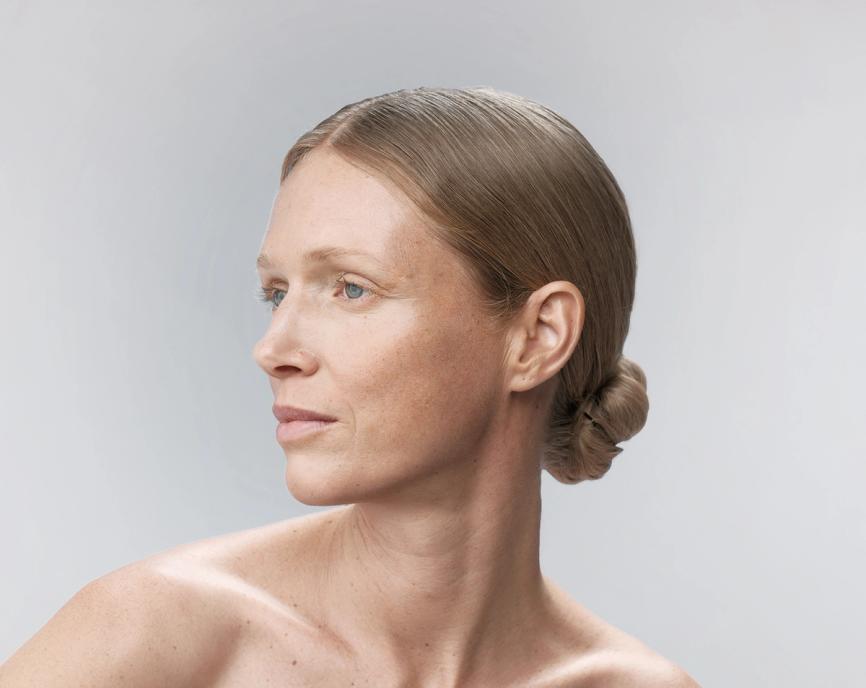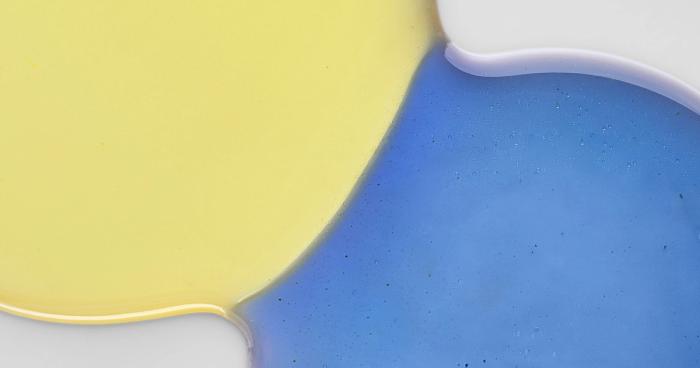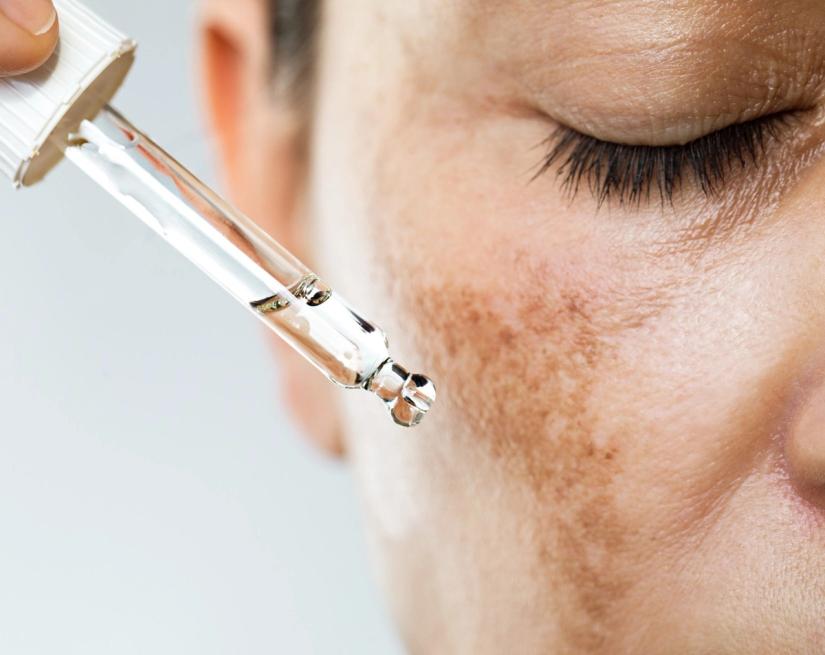skin care
Skin Cycling: The Key to Glowing, Healthy Skin
Eve Mérinville | Corporate RD Excellence & SC RD and Innovation Director
10 min read

Skin Cycling: The Key To Glowing, Healthy Skin
In recent years, social media has been a go-to source for seeking out the latest beauty tips and tricks. Among the captivating content, skin cycling has become highly popular, with over 150 million TikTok views alone. While the concept may not be not new, the term is. “Skin cycling” was coined by New York dermatologist Whitney Bowe, MD. This unique routine involves rotating through the active ingredients used in your skincare routine every four days to simplify your routine and prevent irritation from active ingredients.
To delve further into the concept of skin cycling, it is important to understand that our skin goes through a natural cycle every 28 to 40 days, during which new skin cells are formed and old ones are shed. This process is essential for maintaining the health and radiance of our skin. While there are four stages of skin cycling: renewal, restoration, strengthening, and maintenance: it can be personalized to suit different skin types and concerns. By creating a customized skin cycling routine, you can maximize the benefits of each stage of the skin cycle and achieve glowing, healthy skin.
"Cycling between products that are more intensive and renewing, and those that are restoring and nourishing, provides exactly the activity and protection that creates and maintains a truly healthy skin structure."
Elisabeth Nehme - Global Brand Ambassador Comfort Zone
Understanding The Skin Cycle
By understanding the skin cycle, you can create a personalized skincare routine that targets your skin's specific needs and helps promote healthy and radiant skin. There are four stages of the skin cycle, each affecting the health and overall appearance of the skin. It is important to use the right products and understand how the cycle works. Here’s the breakdown:
Night 1: Exfoliation
This stage of renewal typically involves exfoliation to remove dead skin cells and encourage a radiant complexion. Begin your routine by cleansing, followed by the application of your preferred exfoliant. End your routine with a hydrating moisturizer.
Night 2: Retinoid
After the renewal stage, the new skin cells will need to undergo restoration. During this stage, or the retinoid night, the skin’s barrier will be strengthened and rebuilt to protect against external factors and maintain proper hydration. After cleansing, use a preferred retinoid to assist with the skin’s elasticity and firmness.
Night 3: Repair
On night three, or the strengthening stage, the goal is to use the necessary ingredients to help strengthen and repair the skin barrier that was compromised during nights one and two. On repair nights, you will skip the exfoliants and retinoids and instead use serums containing growth factors.
Night 4: Recover
Once the skin has undergone the renewal, restoration, and strengthening phases, it enters the maintenance stage, also known as recovery nights. During this phase, the skin aims to sustain its improved condition and balance. This recovery stage is all about hydration, moisture, and rebuilding the skin’s barrier. After cleansing, use hydrating serums with hyaluronic acid before applying a moisturizer.
Repeat
Continue repeating this process.

Benefits of Skin Cycling
Skin cycling is a skincare technique that involves using different products and ingredients at different stages of the skin cycle to match the skin's natural process in order to promote healthy and radiant skin. By incorporating this technique into your skin care routine, you can target the specific needs of your skin at each stage of the skin cycle to achieve a more youthful, glowing complexion.
Enhanced Cellular Turnover
Skin cycling can promote faster cellular turnover, which means that old skin cells are shed more quickly, and new ones are formed more rapidly. By incorporating ingredients like hyaluronic acid, ceramides, collagen, glycolic acid, and salicylic acid into different stages of the skin cycle, you can support the process and achieve a more youthful complexion. These ingredients can help moisturize and plump the skin (hyaluronic acid), strengthen the skin barrier (ceramides), boost collagen production (collagen), exfoliate and improve skin texture (glycolic acid), and unclog pores and reduce inflammation (salicylic acid).
Improved Skin Texture and Tone
By targeting each stage of the skin cycle, you can help to improve skin texture and tone. Maintaining a healthy skin barrier will protect your skin from allergens, harsh chemicals, and potential breakouts. Skin cycling is designed to prevent over-exfoliation and irritation from occurring. By helping support the skin barrier, skin cycling keeps the skin looking healthy and glowing.
Reduced Inflammation and Acne
Skin cycling can be beneficial for helping manage acne, and reducing inflammation with the natural renewal of skin. By following a consistent skin cycling routine, you can healthily maintain acne-prone skin and balance oil production. By addressing specific concerns with active ingredients during each phase of the cycle, you can minimize acne and inflammation and prevent future breakouts.
Increased Product Efficacy
By using products that are specifically tailored to each stage of the skin cycle, you can optimize their performance and maximize their benefits. Skin cycling allows you to introduce active ingredients individually, minimizing the risk of irritation or overuse. This approach ensures that your skin has ample time to recover and fully benefit from potent ingredients like retinoids. By strategically incorporating specific ingredients during different phases, you can optimize their effectiveness while maintaining skin health.
How to Incorporate Skin Cycling into Your Routine
Skin cycling takes a “less is more” approach. Instead of adding more products to your routine, you should use your products in a way that compliments each other. If you’re not sure where to begin, consider the following tips to help you get started with skin cycling:
Understand the Stages of Skin Cycle
Before you begin skin cycling, it's essential to understand the different stages of the skin cycle, including the renewal, restoration, strengthening, and maintenance stages. Understanding the purpose of each stage allows you to make sense of how to effectively structure your skincare routine.
Choose the Right Products
In order to incorporate skin cycling into your routine, you'll need to choose skincare products that are tailored to each stage of the skin cycle.
- Renewal Stage: Look for products that contain chemical exfoliants like alpha hydroxy acids (AHAs) or beta hydroxy acids (BHAs), which gently dissolve dead skin cells and unclog pores.
- Restoration Stage: Moisturizers and serums with ingredients like hyaluronic acid, ceramides, peptides, and antioxidants will help support the skin barrier and provide nourishment.
- Strengthening Stage: Look for products that help fortify and protect the skin. Antioxidants like vitamin C, vitamin E, and green tea extract can help neutralize free radicals and reduce oxidative stress.
- Maintenance Stage: Focus on maintaining the skin's health and balance on recovery nights. Use gentle cleansers to remove impurities without stripping the skin's natural oils.
Create a Schedule
Before skin cycling becomes routine, it may be helpful to create a schedule that outlines which products you’ll use during each stage of the cycle. Different stages of the skin cycle have unique needs, and using products tailored to each stage can help address specific concerns. By incorporating the right products at the right time, you can target specific skin issues, such as exfoliation during the renewal stage or nourishment during the restoration stage.
Gradually Introduce New Products
If you're new to skin cycling, it's best to gradually introduce new products into your routine. This ensures you have time to identify if any specific ingredient causes a reaction or sensitivity. It also helps minimize the risk of experiencing harsh reactions or overwhelming your skin (especially if you have sensitive skin) with too many changes at once. Remember to be patient with your skin and give it time to adjust to new products. Once you’ve determined a product works well for your skin, you can gradually introduce more, leading to a customized skincare routine suited to your specific skin conditions and needs.
Listen to Your Skin
As you begin skin cycling, pay attention to how your skin reacts to different products and ingredients. While most people’s skin responds well to the four-night cycle, it can be modified based on your skin’s needs and goals. Skin cycling serves as a blueprint for adding active ingredients into your routine in a safe, yet effective way. However, you should always listen to your skin and customize your cycle to what works for you.
Common Myths About Skin Cycling
Skin cycling is a valuable skincare technique that can help promote healthy and radiant skin. However, there are common myths about skin cycling that can hinder people from exploring this approach to skincare. Allow us to debunk the myths so you can confidently incorporate this technique into your routine.
Myth: Skin Cycling Requires Using A Lot of Products
Fact: skin cycling doesn't necessarily mean using a lot of products. It's about using the right products at the right time in the skin cycle. This technique is about strategic and intentional product rotation. By being thoughtful with your product choices, you can maximize the benefits of skin cycling without cluttering your skincare routine.
Myth: Skin Cycling is Only for People with Problem Skin
Fact: skin cycling is suitable for all skin types, not just “problem” skin. It promotes healthy and radiant skin, regardless of whether you have oily, dry, or combination skin. Skin cycling offers a versatile and adaptable approach to skincare. If your needs change, so can your skincare routine.
Myth: Skin Cycling Requires A Lot of Time and Effort
Fact: while incorporating skin cycling into your skincare routine does require some planning and effort, it doesn't have to be time-consuming. It is actually designed to simplify your skincare routine, making it more streamlined. By rotating through beneficial ingredients like hyaluronic acid, ceramides, collagen, glycolic acid, and salicylic acid, you can address various skin needs without overusing products. In the long run, skin cycling can save you time by eliminating the trial-and-error process of finding the right products for your skin.

Master Skin Cycling
Whether you are new to the skincare world, or you have a 10-step routine, exploring the concept of skin cycling is worth taking a look into. Skin cycling is a simplified way to incorporate a number of active ingredients without causing irritation and unnecessary overuse of products.
A skin cycling routine is a safe and effective skincare regimen, however, it may not work for everyone. It is always a good idea to speak with a dermatologist if you have any questions before beginning skin cycling. If you’re ready to get started with skin cycling, consider adding some of Comfort Zone ’s best-selling products to your skincare routine.



